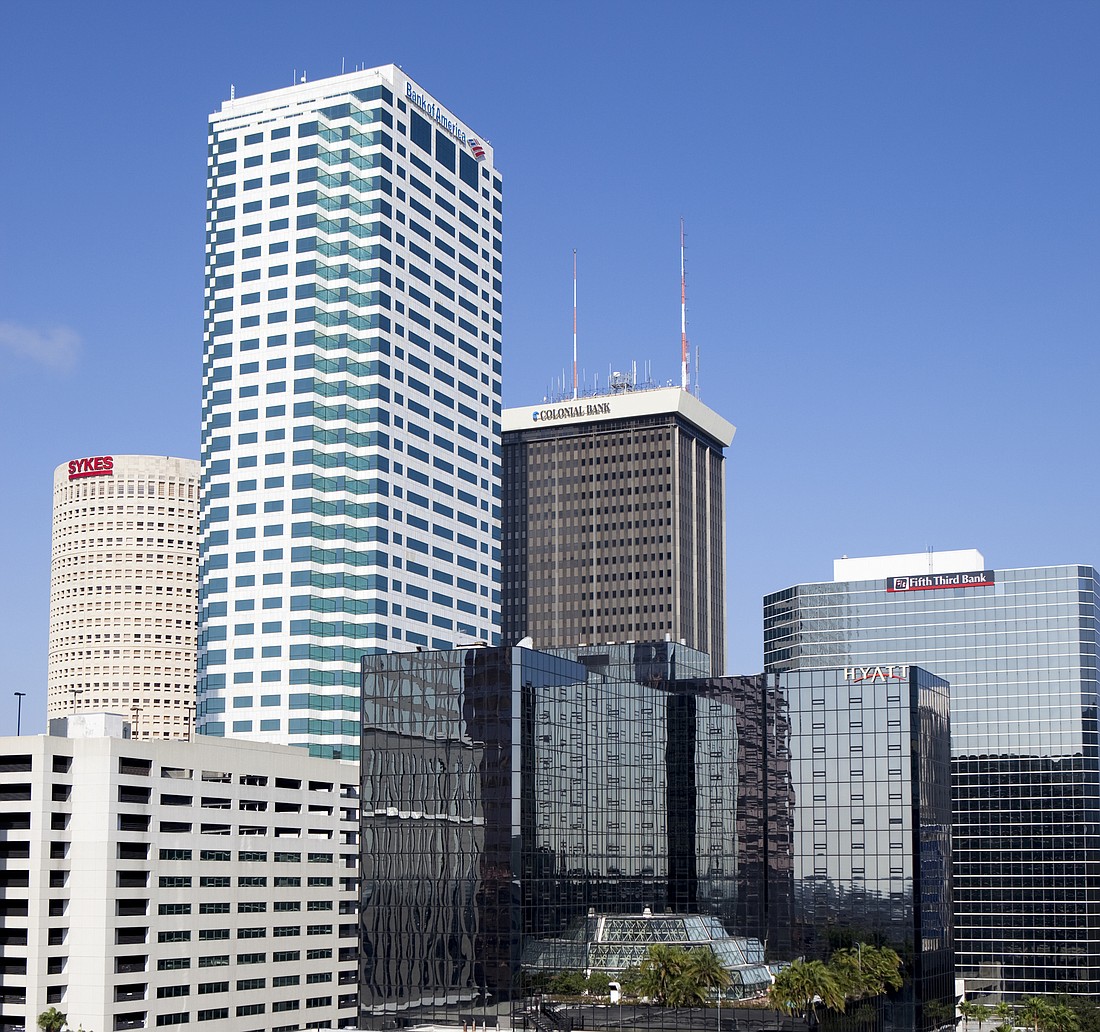- July 26, 2024
-
-
Loading

Loading

Fueled by continued diverse job growth and a wave of development, the latest iteration of an annual survey that ranks U.S. cities based on job growth, economic climate, development and other criteria has placed Tampa and St. Petersburg at No. 6.
The joint Urban Land Institute (ULI) and PriceWaterhouseCoopers’ (PwC) “Emerging Trends in Real Estate” survey for 2021 also says the Cape Coral/Fort Myers/Naples region is the 16th-best place in the country for its “overall real estate prospects.”
ULI and PwC considers the Tampa Bay region a “boom market,” and a “magnet” area together with Dallas/Fort Worth, Phoenix, San Antonio, Houston and Atlanta.
“Tampa and St. Petersburg are really doing a lot right,” says R. Byron Carlock Jr., the head of consulting firm PwC’s U.S. real estate practice. “It has a great mix of business leadership, safety, affordability, waterfront redevelopment and job growth, and both are well-governed cities.”
The Tampa/St. Petersburg ranking is up from 11th last year, and No. 10 in 2018.
By comparison, Orlando ranked No. 24; West Palm Beach No. 27; Miami 30th; and Fort Lauderdale 33rd.
In placing sixth overall and fifth in the nation for homebuilding prospects, Tampa and St. Petersburg topped Atlanta, Boston and Washington, D.C., among others. The Raleigh/Durham region of North Carolina was ranked as the top city in the U.S., followed by Austin, Texas; Nashville; Dallas/Fort Worth; and Charlotte, N.C.
PwC and ULI also note that people are flocking to areas like Tampa, St. Petersburg, Sarasota and Fort Myers from cities like Seattle, Baltimore and Chicago to escape harsh winters, higher costs of living and higher taxes.
Tampa and St. Petersburg were also cited as the second-best area to acquire multifamily rental projects in the U.S., behind only Raleigh/Durham.
PwC and ULI project that while “Super Sun Belt” areas like Tampa and St. Petersburg have relatively small population bases, they will generate 28% of all new jobs in the U.S. between last year and 2025.
Cape Coral, Fort Myers and Naples also were cited as the third-best market in which to buy lodging properties and the seventh-best for retail properties.
In deliberating the rankings, ULI and PwC interviewed more than a dozen real estate leaders either based in or with major projects or operations on the Gulf Coast, including executives at Strategic Property Partners, Redstone Funding, Barron Collier Cos., LSI Cos., Eshenbaugh Land Co., Clover Investment Properties, Halstatt, Feldman Equities, Franklin Street, Highwoods Properties, JLL and Bromley Cos.
“Tampa Bay is well positioned with strong job growth, and we’re benefitting from the exodus of people from the Northeast,” says Lucia Garsys, a Hillsborough County deputy county administrator and chair through 2021 of ULI’s Tampa Bay chapter.
Not surprisingly, a large part of the “Emerging Trends” report discusses COVID-19 and the pandemic’s impact on commercial real estate and the social fabric as a whole.
Describing the virus as “one of the most dramatic shocks that the vast majority of the globe will ever live through,” the report cautions that repercussions for office space, retail stores and hotels will likely be long lasting.
An overwhelming majority of the 550 surveyed, for instance, say they believe the “work from home” trend will linger long after a coronavirus vaccine is approved and administered.
“Work from home is here to stay, because technologically we can execute as never before,” PwC’s Carlock says. “But people need social interactions for best productivity, so our forecast is that going forward, people are going to use office space differently.”
At the same time, most participants say bricks-and-mortar retail stores will continue to face declining traffic and a “painful shakeout,” and that it will be years before the lodging industry rebounds.
“COVID-19 has kicked real estate certainty to the ground,” the report states. “The retail property sector was already struggling on the eve of the pandemic — and now conditions threaten to get much, much worse.”
Even so, there are bright spots in some sectors, with distribution centers, data centers, medical office buildings and self-storage facilities all noted for their resilience and continued demand.
“The pandemic emphasized the role of supply chains as a competitive advantage,” the report states.
The 2021 version of “Emerging Trends” also contains a social bent that has been lacking in previous editions. Most notably, the subjects of tackling affordable housing, racial justice and social equity all addressed.
“Years of underfunding and a lack of attention have created a housing availability and affordability crisis throughout the United States,” the report states.
Garsys agrees the Tampa Bay area also has considerable work to do in the areas of social justice and affordable housing.
“Affordability and social equity are very significant issues here,” she says.
Both Carlock and Garsys say that for the region to crack ULI and PwC’s Top Five in the future, it will have to further focus on STEM-related education and job growth, establish systemic public transportation and maintain both public sector and private investment.
“We’re on a trajectory to get there, I believe,” Garsys says. “There’s a lot of optimism in the region and a lot of room left to grow.”
In the meantime, ULI officials say the region can, and should, focus on the many significant investments that will improve the quality of life for residents and make the area even more attractive for future investment.
“As we look to 2021, there are a lot of exciting projects either underway or that have recently been completed,” says Siobhan O’Kane, the director of ULI’s Tampa Bay chapter.
“The St. Petersburg Pier, West River, the ongoing Water Street Tampa, Midtown Tampa — these are all game-changing projects for us,” O’Kane says.